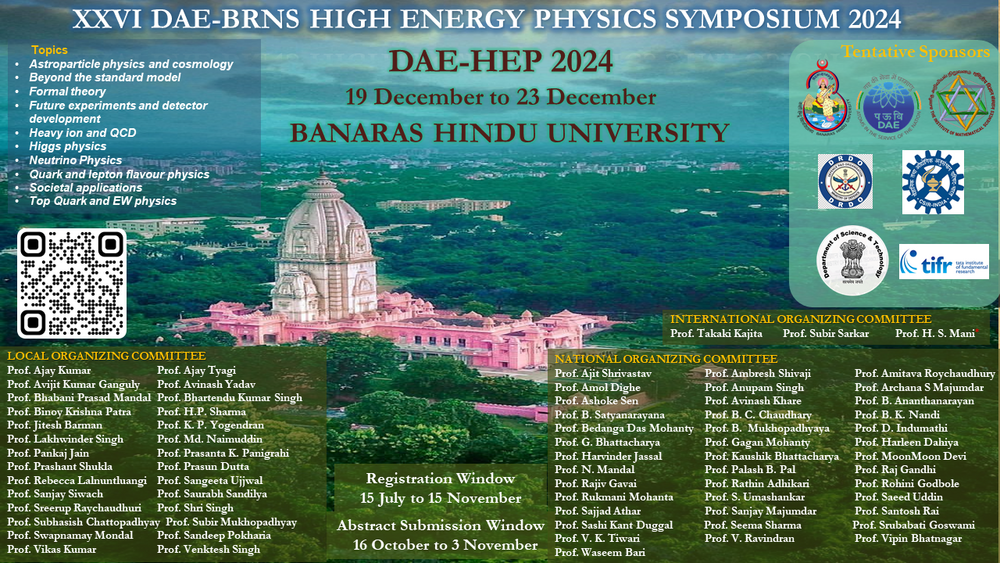Speaker
Description
Background: The study of pion-nucleon scattering is essential in particle and nuclear physics due to the complexities introduced by strong interactions and isospin-dependent dynamics. The analysis of pion-nucleon scattering provides insights into resonance behavior and the underlying forces between pions and nucleons.
Purpose: In this work, we construct inverse potentials for pion-nucleon scattering by choosing a piece-wise smooth Morse function as a reference, focusing on single channel scattering processes. Our study specifically targets the S11 (isospin T = ½) and S31 (isospin T = 3/2) states to capture the isospin-dependence in the scattering interaction.
Methodology: The phase equations for = 0 channel are solved using the fifth-order Runge-Kutta method, enabling the calculation of scattering phase shifts across a range of energies up to 310 MeV. Model parameters of the reference function were optimized by minimizing the mean squared error (MSE) between the computed and expected scattering phase shifts, providing an accurate description of the pion-nucleon interaction for both isospin states.
Results: The inverse potentials for pion-nucleon scattering, were successfully constructed with MSE equal to 0.12 and 0.0004 for S31 and S11 respectively. For the S11 state, the inverse potential analysis reveals a strong attractive potential with a depth of Vd = −384.86 at a short range of rd = 0 .55 fm. This state also exhibits a moderate Coulomb barrier of VCB=9.85 at a distance of rCB = 1.59 fm, reflecting the repulsive effect of the pion's charge at close proximity to the nucleon. In contrast, for the S31 state, we observe a significantly shallower potential depth of Vd = −121.818 MeV, extended to rd = 0.78 fm, indicating a weaker but more extended interaction range. The Coulomb barrier for this state is minimal at VCB = 0.0003 MeV and rCB = 5.56 fm, suggesting a reduced repulsive influence in this isospin channel. These results underscore the isospin-dependent nature of the pion-nucleon interaction, highlighting distinct scattering behaviors in the S11 and S31 channels.
Conclusion: The constructed inverse potentials accurately describe the isospin-dependent dynamics of pion-nucleon scattering in the S11 and S31 channels, as reflected in the low MSE values of 0.0004 and 0.123, respectively. These results offer valuable insights into the strength and range variations of pion-nucleon interactions across different isospin states, supporting further exploration of resonance and scattering phenomena in particle physics.
| Field of contribution | Theory |
|---|

